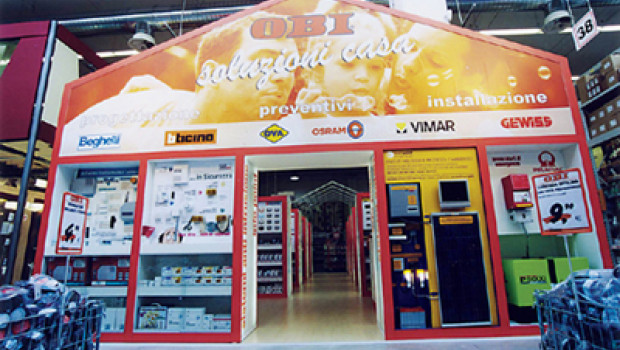Tuscany is once again the location where Obi has opened a new DIY store. It is the company’s 30th in Italy, an outlet offering a 5200 m² retail area, eleven checkouts and 500 parking slots. Opened in October 2003, the DIY store is situated in the new Sesto shopping centre, which also houses a Coop hypermarket. In total, there are around 160000 families living within the catchment area of the shopping centre.This new Obi is characterised by a number of special features: new concepts have been applied here, with the aim of modernising and optimising the product offer, and the presentational style in particular.One example of this is provided by the bathroom furnishings and plumbing department, where the range of products is structured according to a choice of different styles. No less impressive is the lighting department, which has always played a significant role at Obi. Well-known brands are on offer, and there is a successful combination of the display solutions required for the different designer styles with the traditional assortment.The range of housewares has been redesigned from scratch. Three shops-within-the-shop have been dreamed up for this department to do justice to the different styles represented (classic, modern and designer). Newly added to the selection is an assortment of giftware, furnishing items, kitchen articles and table decorations.Where the core ranges are concerned, paint, tools, hardware, electrical and wood, the high degree of specialistion is backed up by functional and rational presentational solutions, which are designed so that customers can find the desired products quickly and easily. Head office is convinced that customers make their purchasing decisions purely intuitively, in terms of brands, technical characteristics and features, as well as what they feel to be an appropriate price. This has led to the creation of a new department for power tools, which serves as a concrete example of “category management” where the range is structured by individual areas of application and by the different levels of experience of the potential customers.


